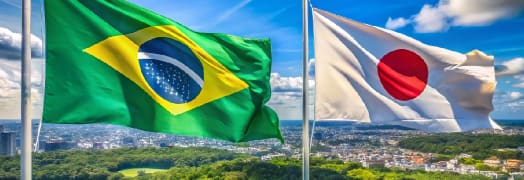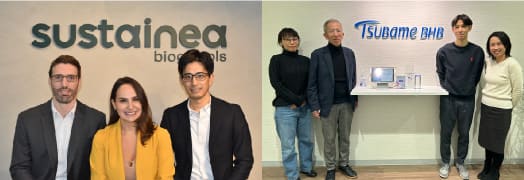Greening the supply chain for plastic products
The Japanese trading house Sojitz and the integrated Brazilian chemicals manufacturer Braskem are developing technology for producing crucial raw materials for plastic products from plant-based carbohydrates. They are commercializing their breakthrough technology through a US joint venture that they established in 2022 as Sustainea Bioglycols. That joint venture will begin producing monoethylene glycol (MEG) and monopropylene glycol (MPG) in 2028 at a plant in Lafayette, Indiana.
“Braskem is a company where management has a keen sense of environmental responsibility,” lauds Shibata Koki, a deputy general manager in the Basic Chemicals Department at Sojitz. “We have a long history with them, our relationship dating from 1972, and they’ve been talking about renewables since long before anyone was talking about decarbonization. Our business includes marketing Braskem’s ‘green polyethylene,’ which minimizes carbon dioxide emissions and is 100% recyclable. Now, Sustainea is a deeper leap for both companies into sustainability. Our business vision calls for it to ultimately be producing up to 700,000 tons of bio-MEG annually at three plants around the world.”
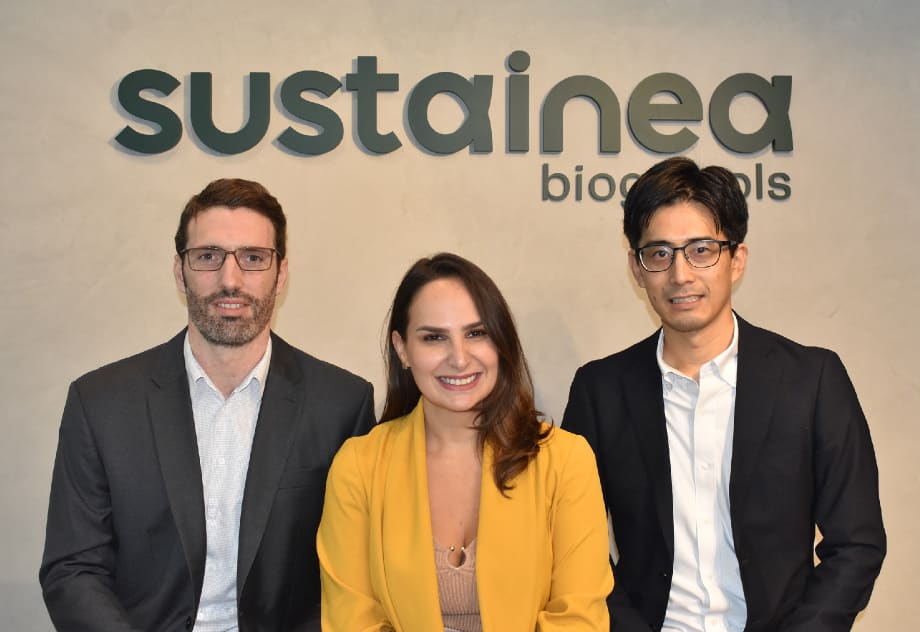
From left: Sustainea Bioglycols’ Gustavo Sergi, CEO; Thuane Pisciottano, Chief Legal and Administrative Officer; Yuichi Hattori, CFO
MEG is a raw material for polyethylene terephthalate (PET), which is familiar in plastic beverage bottles, plastic food containers, and polyester textiles. Manufacturers of PET have traditionally used MEG derived from petroleum. The bio-MEG alternative reduces the carbon footprint in PET manufacturing without compromising product quality or performance. Sustainea’s process for producing bio-MEG also yields MPG, which is a raw material for unsaturated polyester resin. Manufacturers use that material extensively in boats, automobiles, and civil engineering. Replacing petroleum-derived MPG with Sustainea’s green alternative will thus reduce the carbon footprint in those sectors, too.
“The process that Braskem and we are developing to produce bio-MEG and bio-MPG,” adds Shibata, “has another advantage over the processing for their conventional technology–derived counterparts. It comprises fewer steps, which means that the production facilities are more compact and less expensive to build.”
Sustainea’s Lafayette plant will stand alongside a plant that the US company Primient is building to process corn. Primient produces food ingredients and industrial materials from plant-based, renewable sources, and its Lafayette plant will supply corn-derived dextrose feedstock to the Sustainea plant. The Sustainea technology for producing bio-MEG and bio-MPG is also adaptable to carbohydrate feedstock derived from such sources as sugarcane, wheat, and sugar beets. Sustainea presently employs dozens of people, and that number will grow as the company moves toward fulfilling its long-term vision of a three-plant production network.
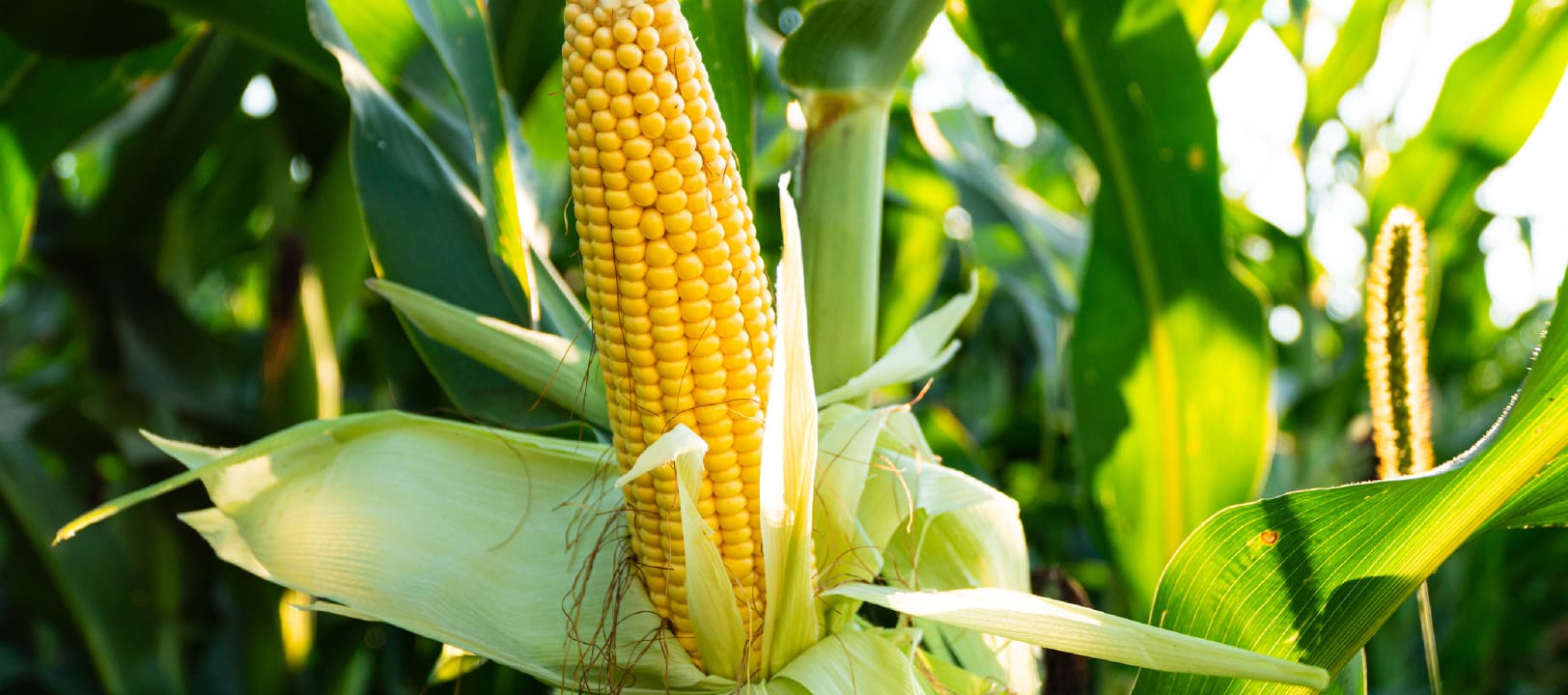
Raw material for Sustainea’s bio-MEG and bio-MPG
Delivering on the promise of ammonia
Japan’s Tsubame BHB is promoting green fertilizer in Brazil with breakthrough technology for producing ammonia onsite at sugarcane processing mills. Although Brazil is the world’s largest producer and exporter of such agricultural commodities as sugar, soybeans, and coffee, it relies on imports for 95% of its nitrogen fertilizers, such as ammonium nitrate and urea. That is largely because Brazil lacks substantive capacity for synthesizing ammonia, an important precursor for those fertilizers.
“Transporting ammonia as gas is troublesome and expensive,” explains Kaneki Sachio, a Tsubame BHB executive officer and the general manager of the company’s Business Development Division. “Ammonia therefore moves around the world mainly in the form of granular fertilizer. Our technology will allow for synthesizing ammonia at the site of consumption. We provide for using liquid residue from bioethanol fermentation and blending it with green aqueous ammonia derived from anhydrous ammonia with Tsubame BHB process technology. It promises to help fulfill the Brazilian government’s aim of reducing the nation’s reliance on imported fertilizer.”
Tsubame BHB originated in 2017 as a spinout venture from what is now the Institute of Science Tokyo. Building on advances by researchers at that institute, it is commercializing their innovative catalyst and related process technology.
A group at the Institute of Science Tokyo led by Hosono Hideo developed electrides—compounds in which electrons serve as negative ions—that can improve catalyst performance. Hosono’s group demonstrated that their electride catalysts engendered synthesis at lower temperatures and lower pressures than was possible with conventional catalysts. The synthesis reaction with their electride catalysts is also more energy efficient than with the conventional catalysts and therefore reduces environmental impact. Tsubame BHB is translating the breakthrough into systems small enough to allow Brazilian sugarcane processing mills to make green aqueous ammonia from green ammonia and thereby reduce Brazil’s reliance on imported urea.
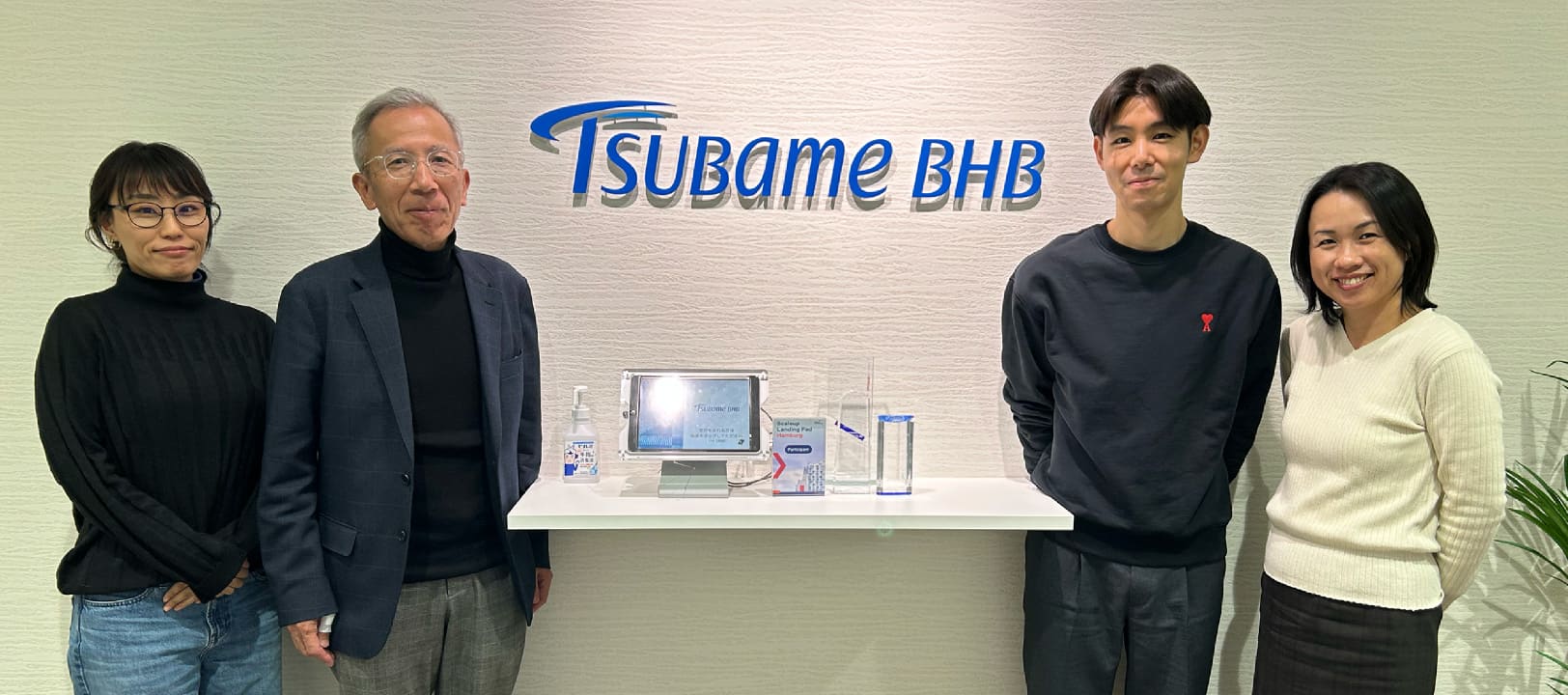
Tsubame BHB’s Kaneki (second from left), Sawada (second from right), and colleagues
“The Brazilian government and Brazilian industry have welcomed our technological offering enthusiastically,” reports Sawada Tetsuro, a member of the Marketing Unit in Tsubame BHB’s Business Development Division. “Letters of recommendation from a public authority and from industrial associations are opening doors for us in the nation’s fertilizer industry. And discussions are underway at several prospective customers.”
Along with being an important precursor for nitrogen fertilizers, ammonia is the subject of great expectations as a fuel. It is a carbon-free energy carrier that can be produced with renewable energy, transported efficiently, and burned as fuel for electric power plants and for ships without emitting carbon dioxide.
Tsubame BHB’s first commercial installation will be a part of a “blue ammonia” demonstration project. Tsubame BHB is supplying the technology for an installation at a Niigata, Japan, gas field operated by the Japanese oil and gas company INPEX. The installation will begin producing ammonia in 2025 and will have an annual production capacity of 500 tons. It will use as feedstock “blue hydrogen” that INPEX secures from natural gas with steam reforming while capturing and storing resultant emissions of carbon dioxide. Tsubame BHB has won a contract for another ammonia synthesis system in Japan, and its management aims to secure contracts for two more systems in 2025.




